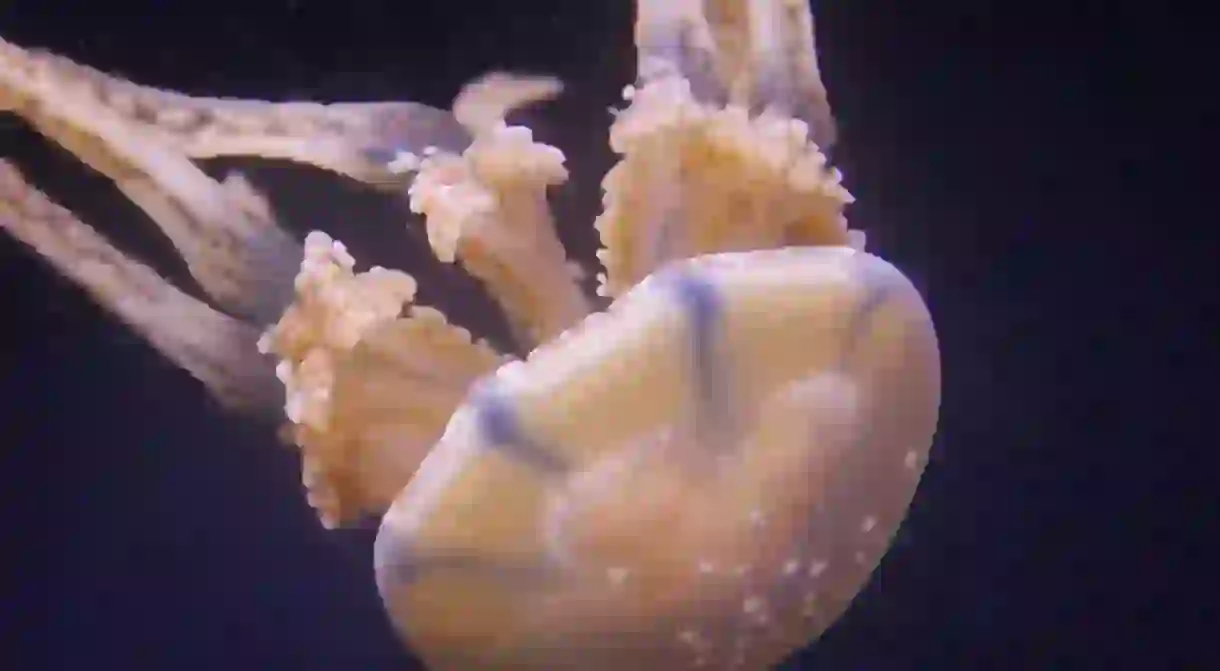Transparent & Deadly: 7 Facts About The Australian Box Jellyfish

Swimming in the warm coastal waters of Australia, you are bound to run into some jellyfish. Some are as small as a thumbnail and others are the size of your TV remote (and sometimes bigger). The Australian box jellyfish holds a powerful venom that is known to stun, injure, and even kill its prey. The jellyfish live no more than twelve months and float through the water. Beware of their stingers!
There are around 50 species of box jellyfish
Although there are 50 or so species of the box jellyfish found in warm coastal waters, very few hold venom that is actually lethal to humans. The two most deadly jellyfish are the box jellyfish (growing up to 20cm in the body) and the Irukandji jellyfish (about the size of a thumbnail).

Their powerful venom lies in their tentacles
The box jellyfish itself grows up to 15 tentacles that can reach up to 3m in length. Along each of the tentacles lies about 5,000 stinging cells that are triggered by chemicals on the skin of animals or humans. Their venom is designed to either instantly stun or kill their prey, and this prevents damage to their delicate tentacles.
They are responsible for over 60 deaths in the last 100 years
Considered to be among the deadliest marine animals in the world, the toxins that lie within the venom of a box jellyfish are known to attack the skin cells, nervous system, and heart. Humans who have been stung can go into shock and drown, or die due to heart failure before they have a chance to reach the shore. Although there have been at least 63 reported deaths since 1884, there have been many survivors. If stung, it is important to keep the heart pumping, so be prepared to conduct CPR.

They can swim up to 6m per minute
Their ability to move through the water rapidly rather than drifting like all other jellyfish is due to their shape. Transparent in colour, their bell is shaped like a four-sided box, with a cluster of six eyes on each side. The sides allow them to steer through the water and move up to six metres per minute.
They shrink if they don’t eat
Known to eat up to three times per day, jellyfish are prone to shrink in size if they do not eat. Whilst small jellyfish eat prawns and the larger eat fish, it has been found that the box jellyfish can lose up to 30% of its own body weight within 24 hours if it does not eat.

Turtles are their only predators
Marine and land animals can be stung by box jellyfish. Sea turtles survive being stung due to their thick skin that cannot be penetrated. However, turtles can be stung in their eyes.
Global warming has caused them to spend more time in our waters
Previously running from November through May, the Australian box jellyfish season has been extended due to the rise in sea temperatures. The warmer waters have attracted many more jellyfish, some of whom can be found in our waters until July. So be sure to check your surroundings before swimming.














